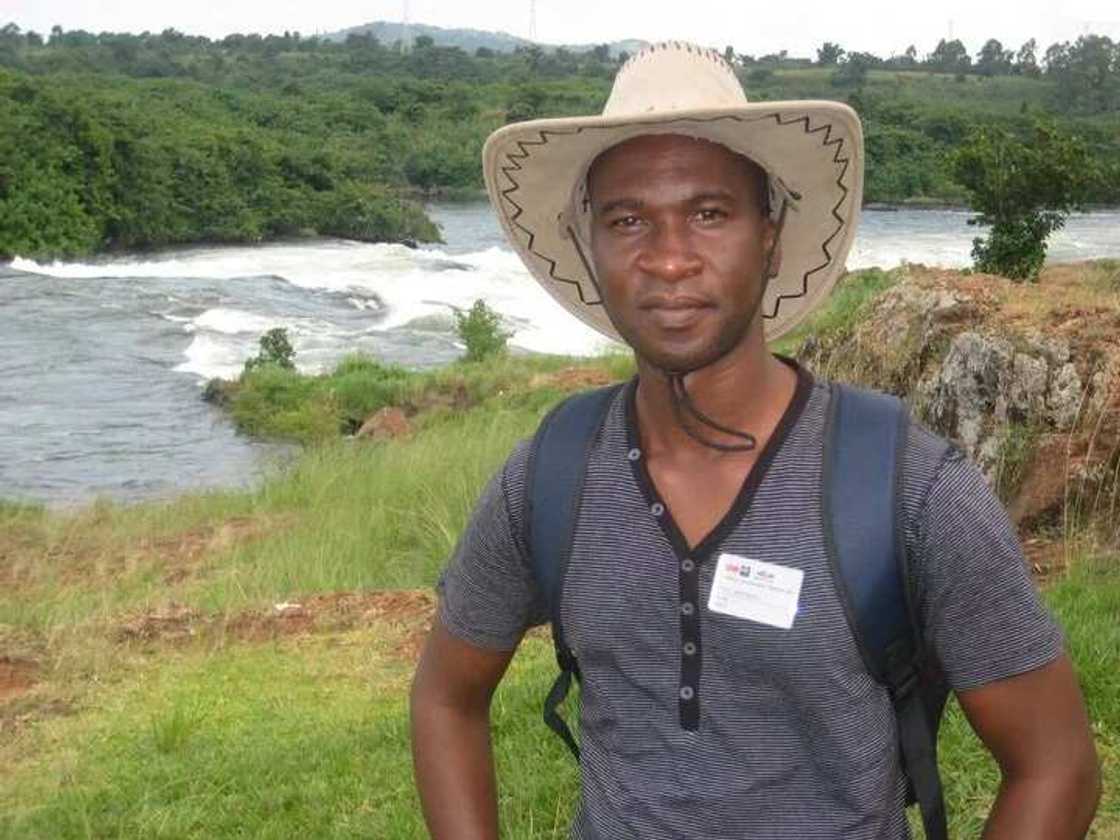Travel Thursday: Inside The Bombed-Out Oron Museum
Editor's note: Legit.ng contributor Pelu Awofeso takes us on a tour of the neglected National Museum in Oron, depicting its neglect, especially of what should be revered as a national monument, the Ojukwu Bunker, one of the enduring relics of the Nigerian Civil War.

The National Museum in Oron, Akwa Ibom State, Nigeria is a sorry sight. It is deserted outside and dark inside; the whole facility speaks of one thing: neglect.
“We hardly have visitors, but there is a lot here people will find interesting,” Gentle said at the door to the gallery and just before he took me on a tour that lasts roughly 45 minutes. “Please help us to broadcast this place to Nigerians out there.”
Gentle is an educational officer at the museum and one of three staff on duty on the day I visit, late August. An engaging character, he was the ideal guide, spinning story after interesting story about the museum’s objects and its turbulent past; but not having a steady flow of visitors meant that he spent most of his days idle or, as he was when I arrived, chit-chatting with a friend.
READ ALSO: 11 “Hidden” Museums In Nigeria You Need To See
The Oron museum — like most museums across Nigeria — has a rare collection of objects on display that any community or country would be proud to have, starting with the section of carved wooden figurines (Ekpu), through the masquerade (Ekpe) and pottery (Ishibori) sections to the local musical instruments and traditional mats sections.
It celebrates the cultural and historical riches of some of the main ethnic groups that make up Akwa Ibom State— Annang, Ibibio, Oron. But I couldn’t help noticing that many of the exhibits were covered in dust.
It was no surprise that Gentle was already immune to the uninspiring setting that was the main gallery. He was, however, spurred along by the story he needed to share.
“At inception, this museum had more than 600 carvings but most of them were destroyed during the civil war,” Gentle said, leading me through the few carvings on show. “It was rebuilt in the 1970s and this gallery was re-constructed with the help of British anthropologist Keith Nicklin, whose statue you saw on your way in.”
[article_adwert]

The Nicklin statue, and the lawn around it, were the only uplifting sight here.
Gentle continued as the tour reaches the Manilla section: “This was a purpose-built facility. We have an antiquities’ store with more than double the number of objects you see in the gallery. We have conservators, we have archaeologists, we have ethnographers, librarians and all that. We have welding and carving departments.”
But there is not a soul in sight.
“Unfortunately, these people after they have worked and retired, there are no replacements for them, so some of the departments are dying off. In fact, as I am talking to you now, we are less than 26 in number, something that was 100-plus before.”
READ ALSO: See Where Nigeria’s First President Was Buried
At this point in the tour, we were standing outside the gallery, facing the Oron River, which flowed gently in the distance. Gentle showed me two de-commissioned oil-wells to prove that the ground on which we stood was once the centre of active crude-oil exploration.
I was not prepared for his next statement. He said: “That is the Ojukwu Bunker."
He pointed to a craggy structure some feet away from us. It was raining, so I was unable to get closer immediately; the gate to the bunker was locked, but I could see the unmistakable effigy of a soldier inside it.

“This place was covered in thick bush during the war, and this was where the Biafra soldiers hid and fired at the Nigerian troops,” Gentle said, rather nonchalantly.
If the bunker was a surprise and a piece of good news, what I saw on the other end of it, when I finally braved the rain, left me shell-shocked: a bar — a thoughtless bar! What sane society does this to a monument?
With strokes of an inferior artist’s brush, this important piece of Nigeria’s national history is reduced to beer-and-pepper-soup joint. The war in question lasted three years and resulted in the death of millions, most of them teenagers. This bunker should be a memorial of sorts to that defining moment of Nigeria’s history, a point of reflection for visitors, if nothing else. It should, no doubt, be a key part of the museum tour/ experience.

Government may be blamed for failing in its responsibilities to the Oron museum, and many of the 60 odd museums nationwide, but a portion of the blame must go to Nigerians, who attach no importance to their heritage, which the museums help preserve.
Nigerians pay 40 pounds to tour Madam Tussauds or the equivalent of 30 dollars to see an underground aquarium in Dubai, but would see no sense in paying N500 to see the ethnographic museum in their backyard. So what happens? The well managed attractions and museums abroad, sustained and maintained by admission fees, grow fatter (figuratively speaking) and the local attractions and museums (like the Oron National Museum)—yes, you get it—grow leaner.
READ ALSO: SEE 7 Items That Unite Nigerians (Photos)

Pelu Awofeso is a winner of the CNN/ Multichoice African Journalist Awards for tourism reporting. He has published three books based on his travels around Nigeria.
Source: Legit.ng

